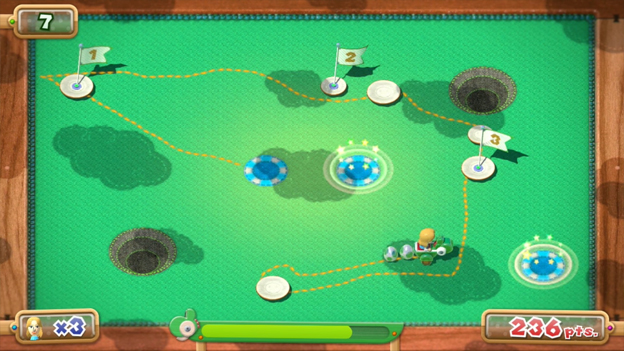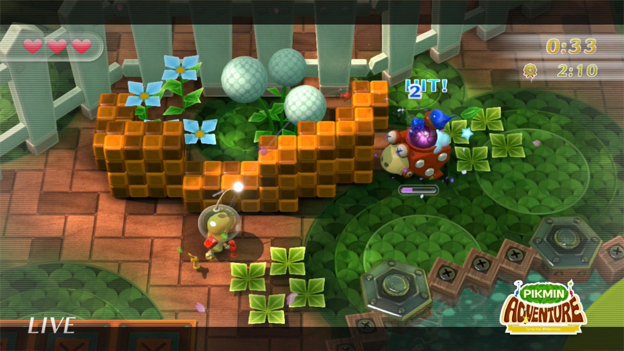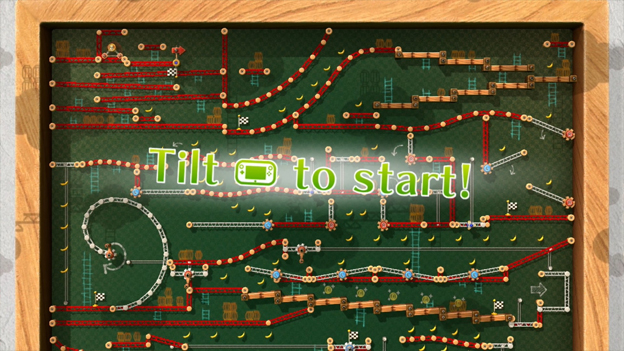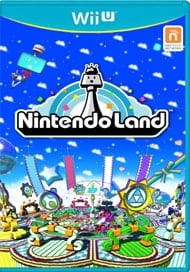The Best Pair Of Training Wheels I’ve Ever Owned
One of the things that made the Wii so accessible to such a large audience of gamers was Nintendo’s foresight in bundling the system with Wii Sports. Unlike previous consoles, the Wii needed a title that simultaneously played the role of hardware tutorial and party game, and Wii Sports fit the bill quite nicely.
Well, Nintendo is attempting to renovate the gaming industry yet again, and players are going to need another set of training wheels. This time, Nintendo Land is what fits the bill.
Nintendo Land, just like Wii Sports, is as much about teaching gamers how to use the system as it is about creating an entertaining experience. Other developers have tried to combine these two things before (like that gross Welcome Park game on the Vita), but no other developer can ever manage to pull off this combination with such charisma.

The title plays its role extraordinarily well, but it’s hard to tell if Nintendo Land has the same kind of immediate accessibility as Wii Sports. The thing that Wii Sports had going for it was that everyone already knew the how to play the games, they just needed a quick introduction to the controls. Nintendo Land, however, has far more complexity, which is both a blessing and a curse. But I’m getting ahead of myself.
Nintendo Land is a theme park that lives inside of your television, which nice because it means you don’t have to pay $15 for a crappy hot dog. Essentially, it’s a collection of minigames that have been sewn together with the theme park motif. There are twelve attractions within the park, and each houses a minigame that has been inspired by a Nintendo franchise.
So, for instance, if you head over to the Legend of Zelda: Battle Quest attraction, you’ll quickly find yourself playing a rail-shooter featuring yourself in the role of a bow-and-arrow-wielding Link. The first-person viewpoint is controlled by the GamePad’s gyroscope, which might mean that you’ll have to stand in order to play the game effectively.
Many of the attractions, Battle Quest included, allow for a group of two (or more) players to join you in the fun. In Battle Quest, players who pick up a Wiimote will be given a blade and required to slash their way through the enemies in the style of Skyward Sword.

Throughout the park, you’re constantly being followed by a robotic tour guide. She’s a floating, one-armed computer screen named Monita who will talk you through the ins and outs of Nintendo Land and provide a short tutorial at the beginning of any attraction. The fact that Monita needs to exist makes it obvious that Nintendo Land takes far more explanation than Wii Sports did, but this is a side effect of the game’s depth. Plus, I like Monita. I’m going to nominate her for teacher of the year.
Metroid Blast is probably the best example of the Nintendo Land’s depth. It’s one of the more complicated attractions in the game, and it requires a fair amount of practice. Players take over the roll of Samus and are tasked with destroying a stream of attacking aliens. Whichever player happens to get his or her hands on the Wii U’s GamePad will be given a gunship to pilot, while those players with lowly Wiimotes are stranded on the ground with a blaster.

Metroid Blast also features a versus mode that sees the Wiimote-holders attempting to defeat the GamePad’s gunship in a deathmatch-style battle. It’s all very exciting.
Most of the in-game attractions show off the console’s asymmetric functionality, which is, according to Nintendo, the whole point of the Wii U. Luigi’s Ghost Mansion, for instance, is a versus-only mode where the player who possesses the GamePad plays the role of an invisible ghost. Each of the other players is given a flashlight, which they try to shine on the ghost before getting themselves captured.
Without the GamePad, this mode would have required everyone to use a split-screened television, which would have encouraged a fair amount of peeking in order to learn the ghost’s location. But the GamePad changes everything, and allows game makers to adopt a whole new thought process about development.
If you’re one of the people who were severely disappointed that Pikmin 3 wouldn’t be among the Wii U’s launch titles, you can find some consolation in the Nintendo Land rendition: Pikmin Adventure. If you’ve ever played any of the Pikmin titles, you’ll have no problem understanding this attraction. The GamePad controls the most adorable spaceman in history, Olimar, and if you’re a Wiimote holder, get to wear the skin of an often-expendable Pikmin.
Nintendo has really reached into their back catalog with this game, too. Aside from their most popular franchises (Pikmin, Metroid, Mario, Zelda, Donkey Kong, etc.), they’ve pulled out several lesser-known classics. Takamaru’s Ninja Castle, which is based on a 1986 Famicom title, is a ninja-star tossing minigame that requires players to hold the GamePad horizontally, use the unit’s gyroscope to control an onscreen cursor, and flick ninja stars at the screen. The faster your flick your finger across the GamePad’s touchscreen, the most velocity they contain. It’s an incredibly clever use of the technology, and it’s quintessentially Nintendo.
Some of the titles are a little more successful than others. Captain Falcon’s Twister Race, which is based on the F-Zero franchise, is a lackluster affair that’s dedicated to racing around a track by simply twisting the GamePad like a steering wheel. It feels excessively slow most of the time, only managing to be exciting for brief moments when you come across a speed pad.

In all, Nintendo Land features six single-player attractions, three that support solo and multiplayer gameplay, and three that are multiplayer only. Most of them do an amazing job showing off the Wii U’s functionality and asymmetric gameplay, but it’s not unusual for an awkward moment to find its way into the attraction.
Aside from the minigame attractions, Nintendo Land also features a large tower in the center of the park. By clicking the tower on the GamePad, players are transported to the top and given access to a Plinko-meets-Space-Invaders game that accepts the coins they’ve been collecting within the minigames. If you successfully pass one of the game’s stages, a prize is shot from the top of the tower and lands somewhere in the park. The prizes are simply franchise-based decorations that have some kind of limited functionality. I managed to collect several of these prizes, some of which were useful, while others were the opposite.
It’s not surprising that Nintendo is touting Nintendo Land as the Wii Sports of their latest console. However, Nintendo Land may not be able to find the same kind of generalized appeal that its predecessor enjoyed. Then again, that surface-level enjoyment has been replaced with an extraordinarily deep experience that showcases the Wii U’s hardware and manages to deliver an experience that’s both enjoyable and long-lasting.
And when was the last time you actually played Wii Sports?
RATING OUT OF 5 RATING DESCRIPTION 4.0 Graphics
Not impressive, but perfect for the title. 4.0 Control
Nearly perfect most of the time, but often very frustrating. 3.0 Music / Sound FX / Voice Acting
Nothing fancy, but nothing to complain about. 4.5 Play Value
Definitely has a more long-lasting appeal than Wii Sports, but also has a much higher learning curve. 4.0 Overall Rating – Great
Not an average. See Rating legend below for a final score breakdown.
| Review Rating Legend | |||
|---|---|---|---|
| 0.1 – 1.9 = Avoid | 2.5 – 2.9 = Average | 3.5 – 3.9 = Good | 4.5 – 4.9 = Must Buy |
| 2.0 – 2.4 = Poor | 3.0 – 3.4 = Fair | 4.0 – 4.4 = Great | 5.0 = The Best |
Game Features:
